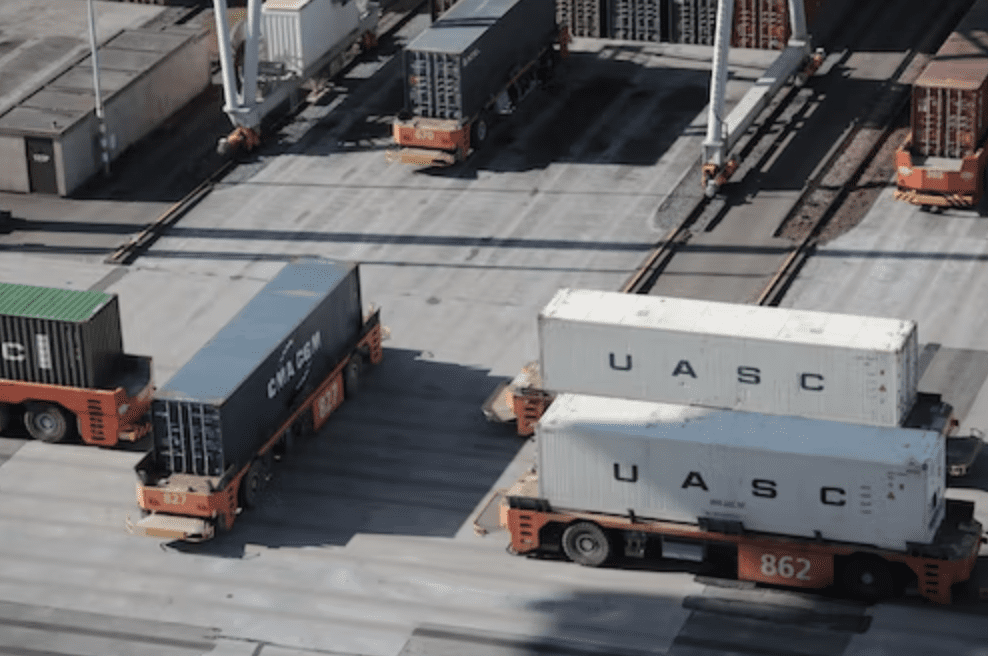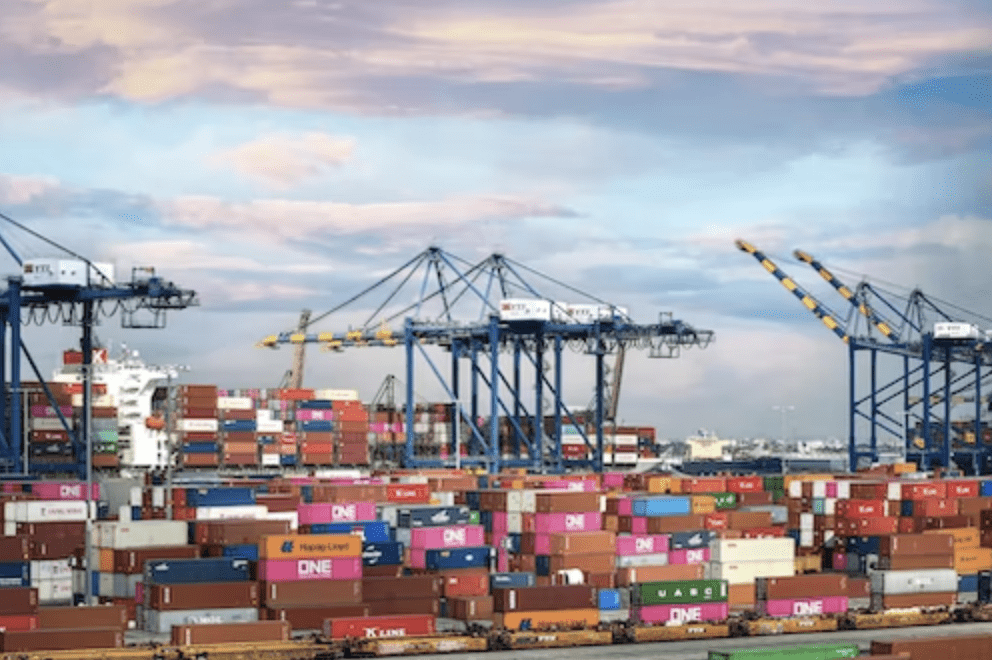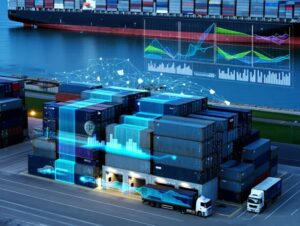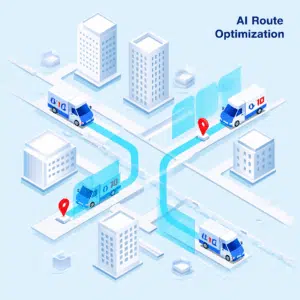Logistics and supply chain management revolve around moving and processing goods from producers to consumers. In modern times, a large volume of information is shared between companies involved in a supply chain network. All that information is collectively called big data.
Big data is a large volume of unstructured and structured data collected from multiple sources. These sources include computers across the internet, mobile devices of consumers, and supply chain management tools and sensors. For supply chains, big data includes all the data collected from different departments such as finance, inventory management, sales and marketing, vendors, and customers.
As you can imagine, this is a short list, as real companies often take data from many more sources.
Big data helps organizations analyze information about products and services to make informed business decisions. Advanced algorithms can be used to apply Machine Learning and Artificial Intelligence techniques to make accurate predictions about demand and supply, and consumer behavior.
Businesses can use the insights gained from big data analysis to optimize their services to lower costs, speed up delivery and provide in-demand products to customers. In short, businesses can use big data to provide a better customer experience.
Benefits of Using Big Data in Logistics and Supply Chain Management
Improved Efficiency and Productivity
With big data, businesses can analyze historical trends to make accurate demand and supply predictions for short-term or seasonal products. The predictions can be made across a range of products and can also be used to account for multiple scenarios. In this way, companies can avoid overstocking or product shortages.
Supply chain vendors can also use the data to optimize delivery routes by observing weather and traffic patterns, and the minimum distance toward a given destination. Delivery optimization allows logistics businesses to reduce delivery times.
Another advantage of big data is that it provides complete supply chain visibility to managers in real time. That means anyone in logistics can see the exact amount of items available in inventory and their availability across a specific delivery route.
Enhanced Customer Service
Companies can use predictive algorithms powered by Machine Learning and Artificial Intelligence to analyze purchasing behavior and recommend specific products to their customers. This can lead to a positive response from customers towards specific item purchases. Amazon and AliExpress are known for utilizing these tools in offering better products and services to their customers.
Big data can inform customers about nearby store locations. Companies frequently share this information with other location providers like Google (which offers Google Maps) to provide a better experience for people on the go. American Express is another example of a company using big data to improve its service.
The bank has deployed extensive Machine Learning algorithms to analyze many factors such as membership history, merchant records, and spending patterns to detect suspicious events. This practice has helped American Express to drastically improve its fraud detection capabilities and deliver a safe experience to its customers.
Reduced Costs
Big data can help businesses identify inefficiencies and excess waste in their supply chain operations, enabling them to take immediate corrective action. For example, analyzing data on production processes can help identify bottlenecks and reduce waste, while analyzing data on energy consumption can help identify opportunities to reduce heat losses or avoid unnecessary uptime on powered devices.
The same is true for using big data to optimize delivery routes in logistics and supply chain management. Sending a fleet of vehicles on the shortest route incurs savings on fuel costs. But there’s more to big data than just operational efficiencies. Companies can use big data to manage their supply chain networks and procure goods and materials at favorable rates. Effective supplier management can help cut down production costs by a significant margin.

Applications of Big Data in Logistics and Supply Chain Management
Predictive Maintenance
Analyzing large amounts of data from equipment sensors, maintenance records, and other sources can help supply chain managers identify patterns and predict when maintenance is needed. This can help reduce downtime, extend the lifespan of equipment, and minimize repair costs.
For example, a logistics company might use big data to analyze sensor data from its fleet of trucks to identify patterns indicating when maintenance is needed. This might include analyzing data on tire pressure, engine temperature, and fuel consumption to predict when parts need to be replaced, or when maintenance is needed to prevent a breakdown.
By predicting maintenance needs in advance, the company can schedule maintenance at the most convenient time and avoid costly downtime or repairs.
Optimization of Delivery Routes and Transportation Modes
Supply chain network operators can collect data on traffic congestion patterns, weather conditions, fleet maintenance, and delivery schedules. Analyzing this data helps them to select the optimal delivery routes to reduce costs and minimize delivery times. Cheaper and faster deliveries also result in satisfied customers.
Big data can also help a supply chain provider to handle complex shipping orders such as multimodal international deliveries. It can help a company keep track of air, rail, and shipping options, enabling a small logistics operation to transition to a complex role in supply chain networking, such as the integration of automated transportation management systems (TMS) and warehouse management systems (WMS).
Risk Management
For logistics and supply chain management, big data encompasses more than just operations management. Because data comes from a variety of sources, managers can collect and analyze the impact of financial information on their business.
Experts at RTS Labs suggest that companies use big data to create financial models based on their balance sheets and generate multiple scenarios for different risk levels. These scenarios can account for diverse factors such as increased expenses and debt costs due to regulations or political instability. In this way, the organization can assess any threats and risks to the business and devise timely strategies to mitigate them. Effective risk management can help to minimize disruptions in supply chains.
Challenges of Implementing Big Data in Logistics and Supply Chain Management
Despite their many advantages, implementing big data systems into an organization is a challenging proposition. Many businesses have difficulty making the transition, which can lead to failure if not done correctly. Here are some major challenges of implementing big data systems in logistics and supply chain management functions.
Integration of Data from Multiple Sources and Systems
As we mentioned at the beginning, big data comes from a variety of sources. Collecting the information, processing it, and further analyzing it requires a complex system that unifies all data points to allow everyone to make sense of it.
There are multiple vendors for big data collection and processing, which further add to the complexity of integration. Each vendor has specific requirements that might be incompatible with other systems. And since many systems are proprietary, it means that supply chain operators are typically locked into one choice with limited ability to make modifications.
Big data integration is also a costly process, as companies have to pay for consulting fees and SaaS packages.
Ensuring Data Quality and Accuracy
Ensuring data quality and accuracy can be challenging when dealing with large amounts of data from multiple sources, such as different databases or applications. Integrating data from these varied sources can be difficult, and inconsistencies in data formats or process definitions can lead to errors and inaccuracies.
Minimizing errors and ensuring consistency requires cleaning and standardizing data. This can be a time-consuming and resource-intensive process, particularly when dealing with big data. For logistics and supply chains, time is of the essence. Inaccurate data leads to operational inefficiencies in inventory management and delivery.
Developing Necessary Analytical Capabilities and Expertise
Big Data integration and adoption involves digitization, and it can be difficult for firms operating manually to adopt these processes. Data analysis requires a specific set of mathematical and statistical knowledge, along with the capacity to visualize and communicate key information to stakeholders.
In other words, it’s a completely different role than the traditional supply chain manager normally involved in maintaining controls and documentation. Companies have to invest resources into training staff to effectively manage big data systems.
Big Data and Sustainability in Logistics and Supply Chain Management
As big data is increasingly integrated into business operations, many logistics and supply chain management companies are starting to realize their potential in sustainability initiatives. This is especially important considering that supply chain companies contribute up to 60% of carbon emissions today.
Here are some ways that big data is helping companies in the logistics industry to transition to environmental-friendly business models.
Sustainability in Route Planning and Vehicle Utilization
We’ve already covered the application of big data in optimizing delivery routes. Modern companies are taking these big data capabilities to the next level. They are extrapolating data points gathered from transport operations to calculate the impact on their carbon footprint from fossil fuel usage. The data is provided by IoT devices deployed on vehicles and packages. The devices measure vehicle metrics and package conditions, respectively.
Route planning and optimization practices also help firms to deploy fewer vehicles on roads. As many as a thousand vehicles can be scheduled off all routes with a single optimization process.
Big data also helps to answer questions about emissions along a specific route, by providing deep traffic pattern analysis. Companies will be able to understand if a short route could lead to a meaningful change in the overall carbon footprint over a long-term timeframe.
Waste Reduction and Recycling
Big data is helping companies to understand how much waste their production and distribution processes produce. Companies can use the data to refine processes and change materials that produce excess waste. Combined with good material management practices, waste can be greatly reduced.
Advanced computer vision techniques are also helping companies to develop robots that can detect solid waste for collection and disposal. The data from their visual sensors helps them to recognize colors, objects, and even brands. In the long run, companies can reduce production costs by reducing or eliminating waste, making them more environmentally friendly.
Supply Chain Transparency and Traceability
Many jurisdictions require compliance with environmental sustainability and governance (ESG) laws, so businesses must follow these rules. Compliance with these rules may require a business to integrate with large public databases that share ESG metrics with suppliers and vendors. In this way, big data helps companies and governments track suppliers who have implemented eco-friendly practices. Sharing this data also encourages these companies to implement sustainability initiatives in their operations.
Future of Big Data in Logistics and Supply Chain Management
Internet of Things (IoT) Sensors and Devices for Real-Time Data Collection
IoT refers to a set of interconnected devices across the internet that collect, store, and process data. These devices include environmental sensors, cameras, microphones, and RFID devices,
IoT devices collect unstructured data that can be processed by cloud-computing services.
IoT devices assist supply chain companies by providing real-time data such as vehicle location, package temperature, and humidity, to name a few. They can also relay data transmitted by machines and other devices to a central location.
IoT devices allow supply chains to collect massive amounts of data from diverse locations to provide detailed insights into business operations.
Advancements in Machine Learning and Artificial Intelligence
Computing advances have allowed researchers to process large volumes of information at higher speeds. Computer scientists and software engineers have also developed new algorithms and programs to boost computing performance.
Today, computer devices have dedicated processors for Machine Learning (ML) and Artificial Intelligence (AI) programs that allow them to run predictive analytics. Predictive analytics enables supply chain managers to make quick, informed business decisions.
Greater Collaboration and Data Sharing Among Supply Chain Partners
As companies grapple with the challenges of collecting and sharing supply chain data, there is a growing awareness among supply chain operators that collaboration is key to solving problems.
The need to share data encourages companies to develop compatible database structures and standards. This, in turn, promotes them to integrate large datasets into their existing systems. Conversely, software developers are also increasingly looking to work together with major supply chain companies to understand and solve industrial-level big data challenges.
Final thoughts
In today’s fast-paced environment, logistics and supply chain management functions generate vast amounts of big data, and companies are becoming increasingly reliant on it for strategic decision-making.
At RTS Labs, we believe that businesses can harness the power of big data to provide a better customer experience, improve efficiency and productivity, enhance service quality, and reduce costs. There is no doubt that a logistics company’s ability to organize and analyze big data can give it a clear competitive edge over other businesses in the industry, and plenty of organizations are looking to provide and utilize such tools to disrupt the industry status quo.
The role of AI and IoT in supply chain management is already evident. New technologies shifting the industrial paradigm to Industry 4.0 and beyond will be the key to achieving further growth. These include advanced layered AI models, blockchain technology, and quantum computing, to name a few.
Additionally, governments, suppliers, and vendors will have to increase collaboration to meet the challenges of climate change and sustainability in logistics.
At RTS Labs, we make software that gives you an unfair advantage. Our elite cross-functional teams bring you the agility of a startup and the scalability of an industry leader.






